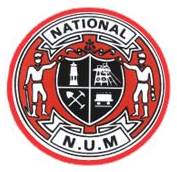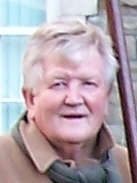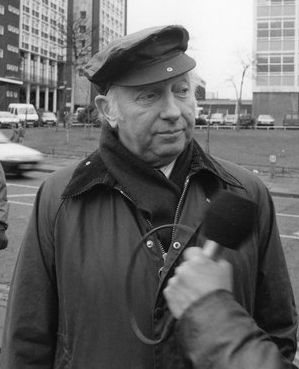Related Research Articles

The 1984–1985 United Kingdom miners' strike was a major industrial action within the British coal industry in an attempt to prevent colliery closures. It was led by Arthur Scargill of the National Union of Mineworkers (NUM) against the National Coal Board (NCB), a government agency. Opposition to the strike was led by the Conservative government of Prime Minister Margaret Thatcher, who wanted to reduce the power of the trade unions.

The Battle of Orgreave was a violent confrontation on 18 June 1984 between pickets and officers of the South Yorkshire Police (SYP) and other police forces, including the Metropolitan Police, at a British Steel Corporation (BSC) coking plant at Orgreave, in Rotherham, South Yorkshire, England. It was a pivotal event in the 1984–1985 UK miners' strike, and one of the most violent clashes in British industrial history.

The National Union of Mineworkers (NUM) is a trade union for coal miners in Great Britain, formed in 1945 from the Miners' Federation of Great Britain (MFGB). The NUM took part in three national miners' strikes, in 1972, 1974 and 1984–85. Following the 1984–85 strike, and the subsequent closure of most of Britain's coal mines, it became a much smaller union. It had around 170,000 members when Arthur Scargill became leader in 1981, a figure which had fallen in 2023 to an active membership of 82.

Woolley Colliery is a village on the border between the Barnsley and Wakefield districts in Yorkshire, England. The village is now in South Yorkshire, while the former colliery was in the Wakefield Rural Ward in West Yorkshire. The village is known locally as Mucky Woolley, as a tribute to its coalmining heritage and to distinguish it from the more affluent village of Woolley two miles away.
The Three-Day Week was one of several measures introduced in the United Kingdom in 1973–1974 by Edward Heath's Conservative government to conserve electricity, the generation of which was severely restricted owing to industrial action by coal miners and railway workers.

Michael McGahey was a Scottish miners' leader and communist. He had a distinctive gravelly voice, and described himself as "a product of my class and my movement".
The Miners' Federation of Great Britain (MFGB) was established after a meeting of local mining trade unions in Newport, Wales in 1888. The federation was formed to represent and co-ordinate the affairs of local and regional miners' unions in England, Scotland and Wales whose associations remained largely autonomous. At its peak, the federation represented nearly one million workers. It was reorganised into the National Union of Mineworkers in 1945.
Joseph Gormley, Baron Gormley, OBE was President of the National Union of Mineworkers from 1971 to 1982, and a Labour peer.

The National Association of Colliery Overmen, Deputies and Shotfirers (NACODS) is an organisation representing former colliery deputies and under-officials in the coal industry.
David James Wilkie was a Welsh taxi driver who was killed during the miners' strike in the United Kingdom, when two striking miners dropped a concrete block from a footbridge onto his taxi whilst he was driving a strike-breaking miner to work. The attack caused a widespread revulsion at the extent of violence in the dispute. The two miners were convicted of murder but the charge was reduced to manslaughter on appeal, becoming a leading case on the issue of the difference between the two offences.
Lawrence Daly was a coal miner, trade unionist and political activist.

The Lofthouse Colliery disaster was a mining accident in Lofthouse, in the West Riding of Yorkshire, England, on Wednesday 21 March 1973, in which seven mine workers died when workings flooded.

Tyrone O'Sullivan was a Welsh trade unionist who was Branch Secretary of the National Union of Mineworkers (NUM) and Chairman of Goitre Tower Anthracite Ltd., the owners of Tower Colliery.

Coal mining in the United Kingdom dates back to Roman times and occurred in many different parts of the country. Britain's coalfields are associated with Northumberland and Durham, North and South Wales, Yorkshire, the Scottish Central Belt, Lancashire, Cumbria, the East and West Midlands and Kent. After 1972, coal mining quickly collapsed and had practically disappeared by the 21st century. The consumption of coal—mostly for electricity—fell from 157 million tonnes in 1970 to 18 million tonnes in 2016, of which 77% was imported from Colombia, Russia, and the United States. Employment in coal mines fell from a peak of 1,191,000 in 1920 to 695,000 in 1956, 247,000 in 1976, 44,000 in 1993, 2,000 in 2015, and to 360 in 2022.
The Kent Miners' Association was a trade union in the United Kingdom which existed between 1915 and 1945, representing coal miners in the county of Kent. After 1945 it was reorganised as the Kent Area of the National Union of Mineworkers.
The Battle of Saltley Gate was the mass picketing of a fuel storage depot in Birmingham, England, in February 1972 during a national miners' strike. When the strike began on 9 January 1972, it was generally considered that the miners "could not possibly win." Woodrow Wyatt, writing in the Daily Mirror, said: "Rarely have strikers advanced to the barricades with less enthusiasm or hope of success... The miners have more stacked against them than the Light Brigade in their famous charge." The picketing of the fuel depot – out of which tens of thousands of tons of coke fuel were being distributed nationwide – became a pivotal, and symbolic, event during the strike. Forcing its closure secured victory for the National Union of Mineworkers (NUM).

Arthur Scargill is a British trade unionist who was President of the National Union of Mineworkers (NUM) from 1982 to 2002. He is best known for leading the UK miners' strike (1984–85), a major event in the history of the British labour movement.
The 1969 United Kingdom miners' strike was an unofficial strike that involved 140 of the 307 collieries owned by the National Coal Board, including all collieries in the Yorkshire area. The strike began on 13 October 1969 and lasted for roughly two weeks, with some pits returning to work before others. The NCB lost £15 million and 2.5 million tonnes of coal as a result of the strike.
Nicky Wilson is a British trade unionist.
Anne Harper is a British community organiser, activist and co-founder of the National Women Against Pit Closures (NWAPC) movement from Barnsley, South Yorkshire. She was politically active during the 1984–85 miners' strike as an activist, community organiser and wife of the then President of the National Union of Mineworkers (NUM), Arthur Scargill. The couple divorced in 2001.
References
- ↑ "National Coal Board (Losses) (Hansard, 5 December 1960)".
- ↑ Hill, Alan (2001), The South Yorkshire Coalfield A history and Development, Tempus Publishing, p. 44, ISBN 978-0-7524-1747-9
- ↑ Hill 2001, p. 43
- ↑ Underground coal production and manpower from 1947, Access to Mineral Heritage, archived from the original on 14 July 2014, retrieved 5 June 2014
- ↑ "COAL INDUSTRY BILL (Hansard, 3 December 1970)".
- ↑ Fielding, Steven (9 July 2018). The Labour Governments 1964-70, Volume 1: Labour and Cultural Change. Manchester University Press. ISBN 9780719043642 . Retrieved 9 July 2018– via Google Books.
- ↑ Handy, L. J. (26 March 1981). Wages Policy in the British Coalmining Industry: A Study of National Wage Bargaining. CUP Archive. ISBN 9780521235358 . Retrieved 9 July 2018– via Google Books.
- ↑ Charlton, John. "John Charlton: The Miners Since Nationalisation (March 1973)". www.marxists.org. Retrieved 9 July 2018.
- ↑ Cliff, Tony. "Patterns of mass strike (Part 3)". www.marxists.org. Retrieved 9 July 2018.
- ↑ "1972 and 1974 Miners' Strikes". www.agor.org.uk. Retrieved 9 July 2018.
- ↑ Routledge, Paul (1994). Scargill: the unauthorized biography. London: Harper Collins. p. 65. ISBN 0-00-638077-8.
- ↑ Strike: 358 Days that Shook the Nation. London: Sunday Times. 1985. pp. 161–162. ISBN 0-340-38445-X.
- ↑ Adeney, Martin; Lloyd, John (1988). The Miners' Strike 1984-5: Loss without limit. London: Routledge & Kegan Paul. pp. 15–16. ISBN 0-7102-1371-9.
- ↑ Routledge, Paul (1994). Scargill: the unauthorized biography. London: Harper Collins. p. 66. ISBN 0-00-638077-8.
- ↑ David Jones. "END OF AN ERA FOR NUM BRANCH". Doncaster Free Press. Retrieved 19 December 2014.
- 1 2 3 4 Routledge, Paul (1994). Scargill: the unauthorized biography. London: Harper Collins. pp. 66–67. ISBN 0-00-638077-8.
- ↑ "1972: Miners strike against government". BBC. 9 January 1972. Retrieved 17 April 2012.
- ↑ "The Battle of Saltley Gate recalled". 10 February 2012. Retrieved 9 July 2018– via news.bbc.co.uk.
- ↑ Kellaway, Robert (2010). "Re-examining the Battle of Saltley Gate: interpretations of leadership, violence and legacy" (PDF). University of Bristol. p. 20. Retrieved 13 March 2015.
- 1 2 3 4 5 6 "Striking miners faced 'volunteer force'". BBC Scotland. January 2003. Retrieved 29 September 2015.
- 1 2 "Obituaries: Lord Wilberforce". The Telegraph. 18 February 2003. Retrieved 21 July 2019.
- 1 2 Travis, Alan (1 January 2003). "Flying pickets paralysed Heath cabinet". The Guardian. Retrieved 21 July 2019.
- ↑ Winterton, Jonathan; Winterton, Ruth (1989). Coal, Crisis, and Conflict: The 1984–85 Miners' Strike in Yorkshire. Manchester University Press. p. 145. ISBN 9780719025488.